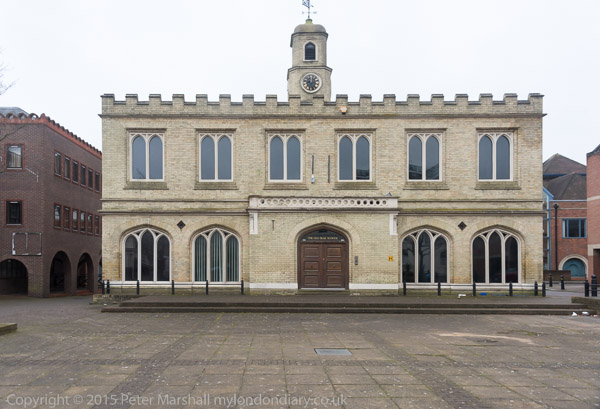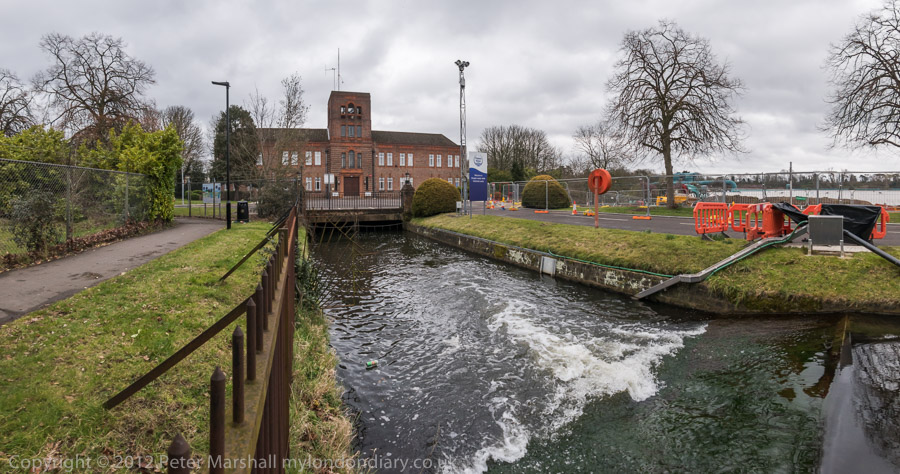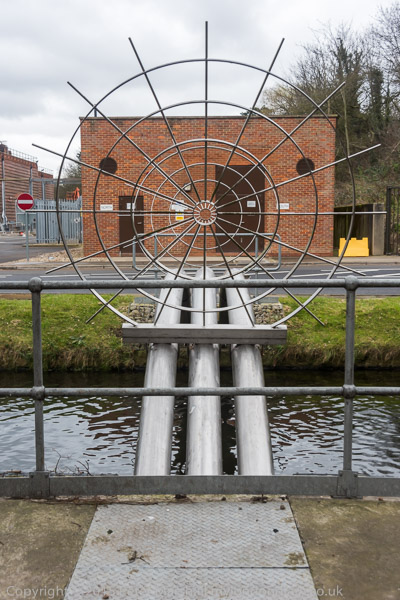When I began my recent post Olympics, Mo and Me I was intending to write rather more about Isleworth and Syon, but as usual my mind wandered in other directions, stopping when I realised I had been going on far too long and it was time for lunch.
Isleworth & Syon School, or to give it its full title, Isleworth & Syon School for Boys is now an Academy and also takes girls into its sixth form. It got Sports College status in 2003 as the lead school for Physical Education and Sport in the London Borough of Hounslow. When I went there it was a voluntary Middlesex County Council school, Isleworth Grammar School, with several nearby Secondary Modern Schools.
A short distance away next to Syon Lane station was (and is) The Green School for Girls which my elder sister attended, on a part of whose playing fields it had a rugby pitch – and the posts suggests it still does. The two then Grammar Schools were linked in other ways, including annual performances by their joint choirs of Bach’s various oratorios in which I performed first as a soprano and later as a tenor, though my heart was more with Buddy Holly and later with Miles and Trane.

Building for the Blue School Foundation in Isleworth in 1841 by C F Maltby
Isleworth Grammar was really on the edge of Isleworth, in Osterley, though its roots lay in Isleworth, and the Blue School Foundation dating from 1630 when Elizabeth Hill gave £20 a year for the education of poor girls and after her death the use of her house in Lower Square for the purpose. Over the years there were other charitable donations for the education of poor children of both sexes and in the 1880s an upper boy’s department was set up which eventually became Isleworth Grammar, while the lower school kept the name the Blue School as a co-ed primary.

Maltby’s design shows some similarity to Syon House
Middlesex County Council provided the grammar with a typical 1930s school building which I attended for seven years in the late 1950s and early 1960s at the top of Ridgeway Road, in Osterley, a little over a mile away from the centre of Isleworth, at the top of a slight hill leading up from Spring Grove, which I cursed for years as I cycled up it. And at least in my case it was still fulfilling part of its founding aim to educate the poor, though I only really became aware of the Blue School link through a small grant – 50% more than the founding donation – for my first year at university. It was withdrawn after that following a less than glowing report from my tutor; £30 then was a tenth of the maintenance grant that I got from Middlesex County Council for the year, so it was something of a blow.
Last March I walked with my elder son from Kew Bridge to Whitton on a less than direct stroll which took us through Syon Park and Isleworth, with one of the highlights being the footpath through Mogden Sewage Treatment Works, another Middlesex County Council project, now run by Thames Water, one of the largest sewage works in the UK, 140 acres which treats the sewage from about 1.9 million people in North and West London – discharging water, usually fairly pure – into the Thames at Isleworth. The guide used to drink a glass at the end of the tour, but at times of heavy rain the plant certainly used to be overwhelmed and release sewage into the river.
Bushes along the footpath now screen much of the extensive range of large open tanks from sight, though not from the nose, though the smells are now rather less than in the past; ten local residents were awarded damages following a court decision in 2011 that failure to manage odour effectively since 1990 was a violation of their human rights.

The Duke of Northumberland’s River provides water for cooling
Middlesex had proposed to site the sewage works in Syon Park, but ‘public outcry’ (and perhaps the influence of the Henry George Alan Percy, 9th Duke of Northumberland, then perhaps appropriately Parliamentary Private Secretary to the Lord Privy Seal) as well as opposition by the chair of the council forced them instead to choose Mogden Farm, next to the Mogden Isolation Hospital.
The smell (and clouds of foam which used to blow away when people changed from soap powders to detergents in their washing machines) made Mogden a bad name, and the hospital became South Middlesex Hospital in 1948, closing in 1991. The area is now called Ivybridge, a name with no known previous local history given to the London Borough of Hounslow estate widely seen as a sink estate. It still shares the Mogden smell.

I’m not the only person to have walked through Mogden – the path is a useful and popular cycle route too, and supporters who want to avoid the Twickenham crowds use it as a longer route to the stadium just to the south from Isleworth on match days. Mogden Stadium perhaps doesn’t sound as good as Twickenham, if geographically more precise.
In John Rogers‘ film ‘The London Perambulator‘, Nick Papadimitriou stands in front of Mogden in the introduction and speaks about it there and later (at around 16-18 minutes) in the 45 minute documentary – while Russell Brand, Will Self and Iain Sinclair make their comments about him. It’s a fascinating study of a modern eccentric who says “This is the end result of years of therapy – Mogden Purification Works” and later comments on the opening of the works by Sir Montagu Sharpe, described by Diana Willment as ‘The Forgotten Man of Middlesex‘, Chairman of Middlesex County Council for many years, and a cofounder and Chairman of the Committee of the RSPB from 1895-1942.
You can see more of my pictures from the walk in Syon, Isleworth & Mogden, as well as pictures from the start of the walk in Brentford in Riverside Brentford and Riverside Brentford Panoramas.
______________________________________________________
There are no adverts on this site and it receives no sponsorship, and I like to keep it that way. But it does take a considerable amount of my time and thought, and if you enjoy reading it, the occasional small donation – perhaps the cost of a beer – would be appreciated.
My London Diary : Buildings of London : River Lea/Lee Valley : London’s Industrial Heritage
All photographs on this and my other sites, unless otherwise stated, are taken by and copyright of Peter Marshall, and are available for reproduction or can be bought as prints.
To order prints or reproduce images
________________________________________________________